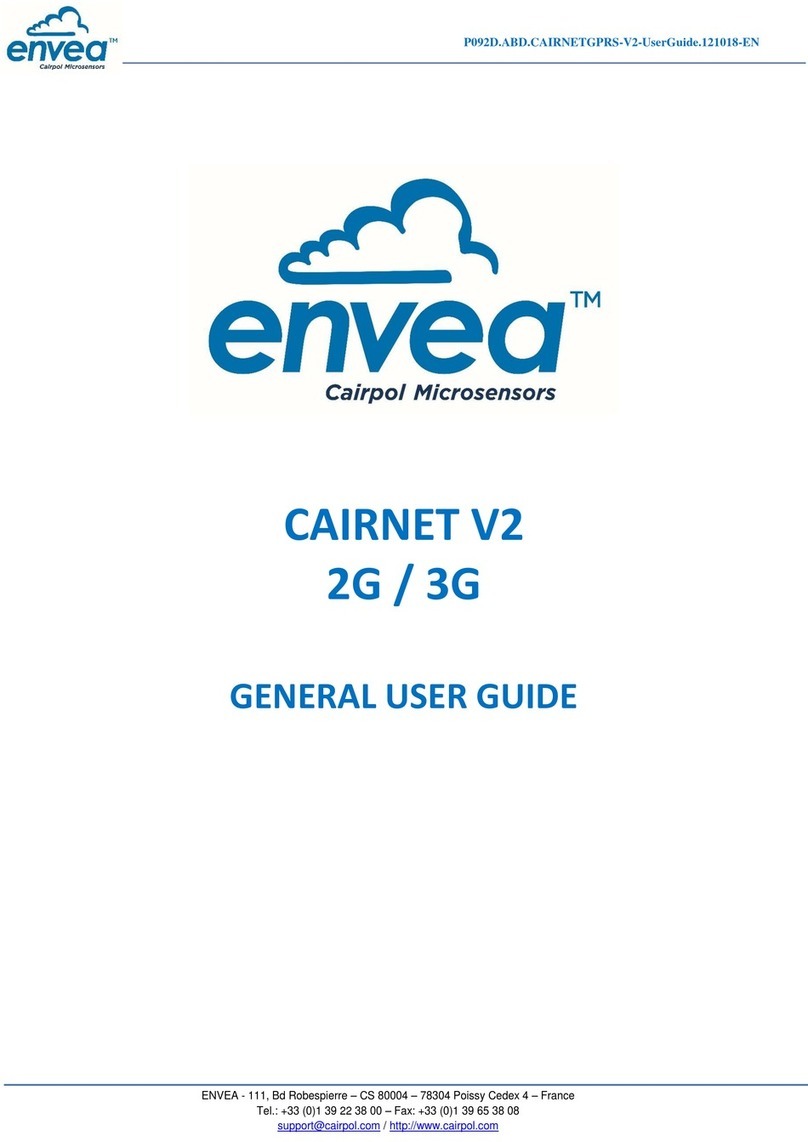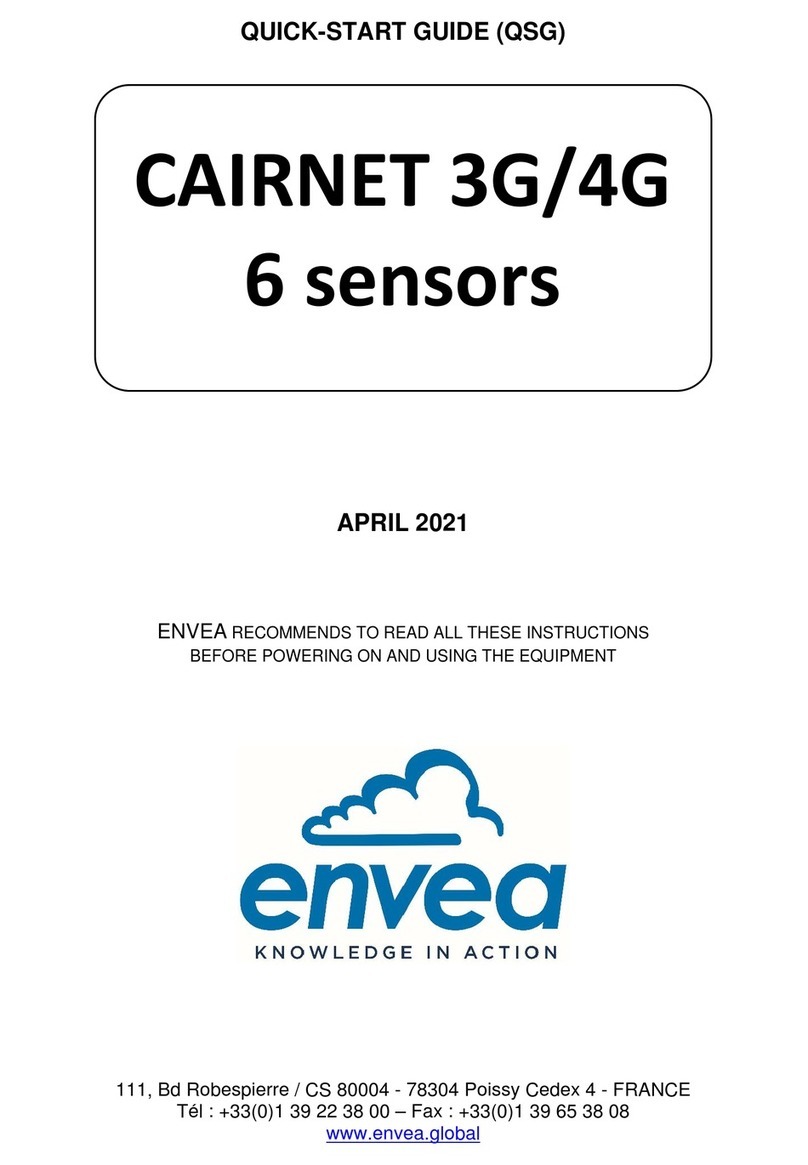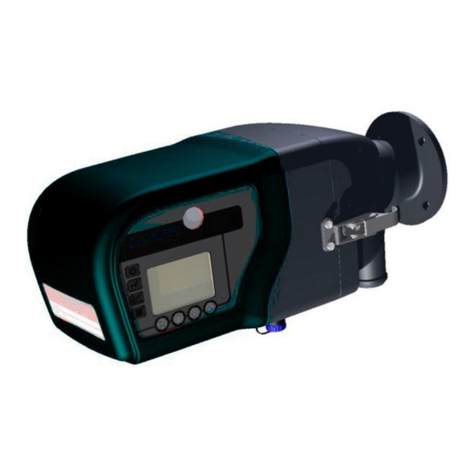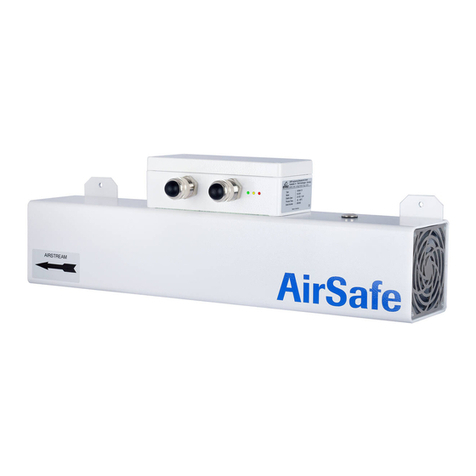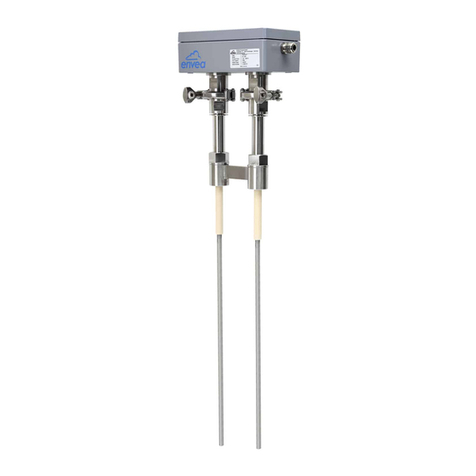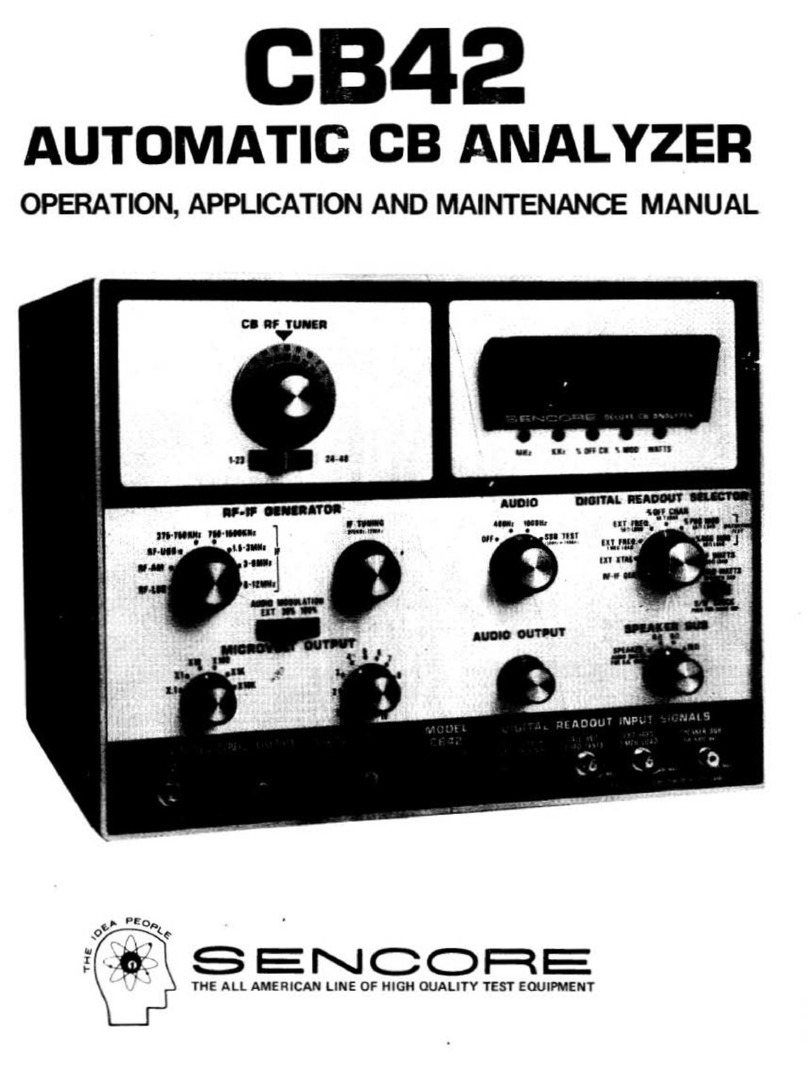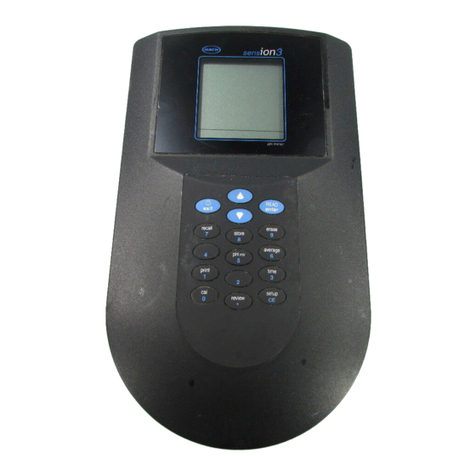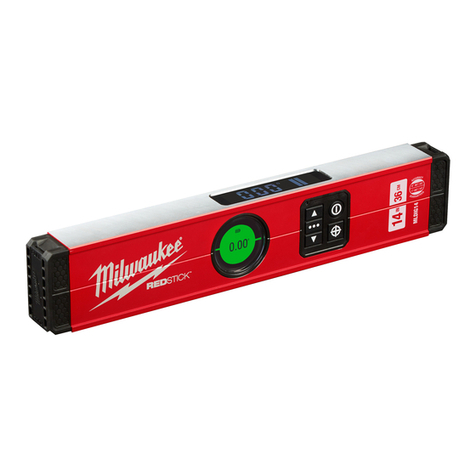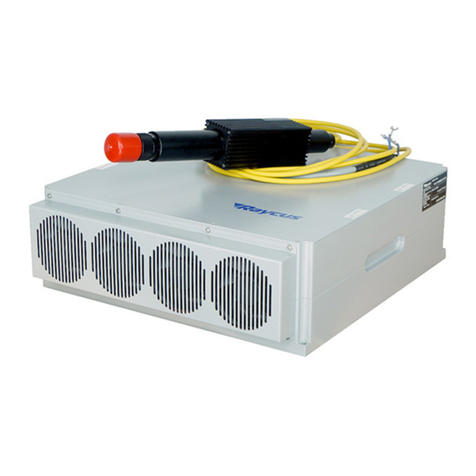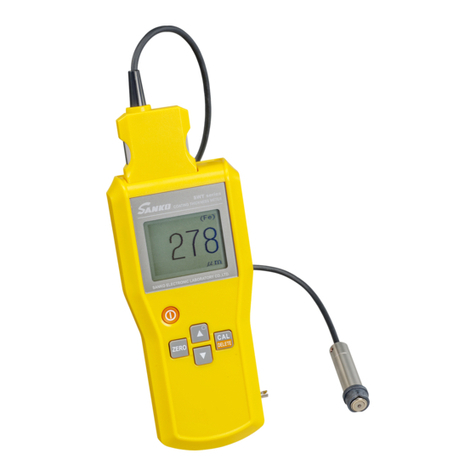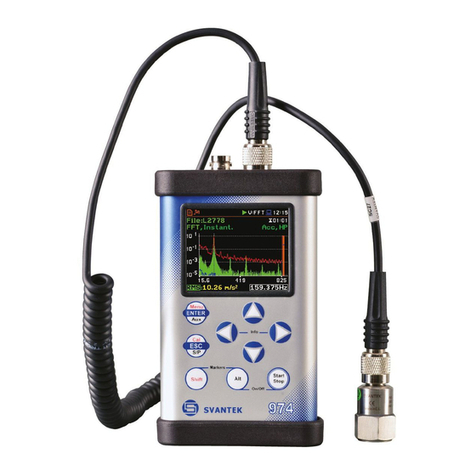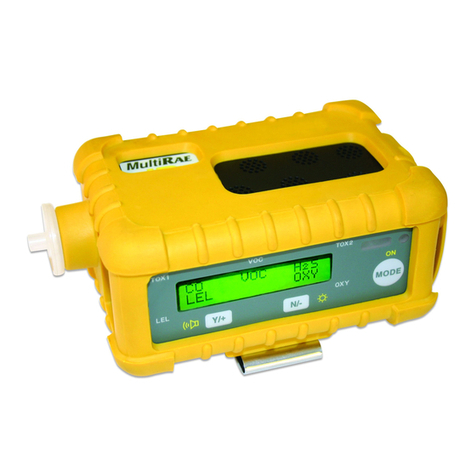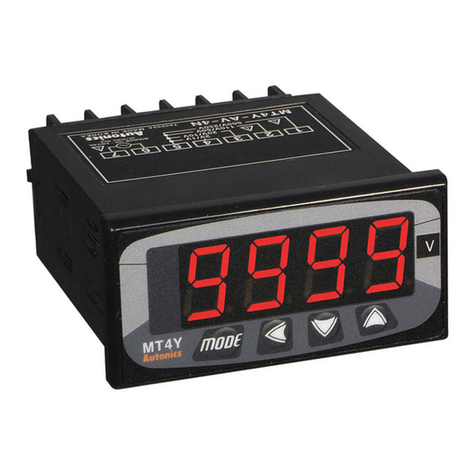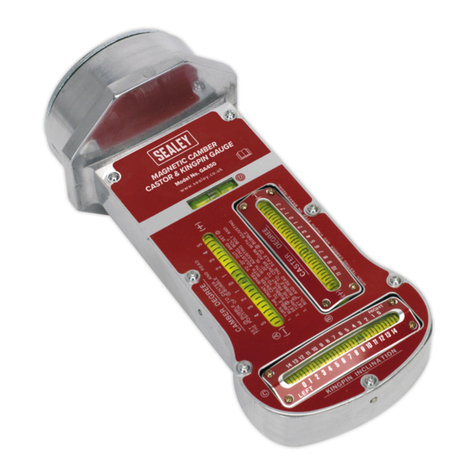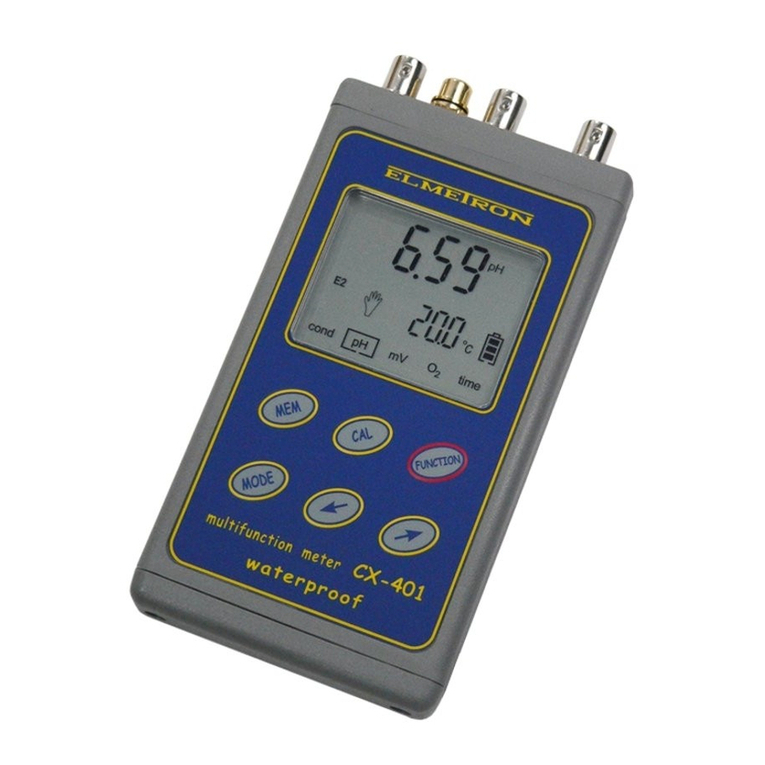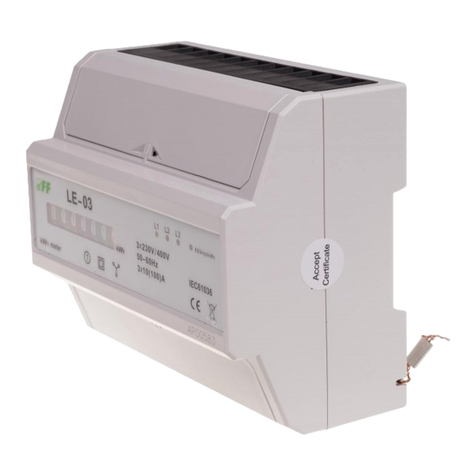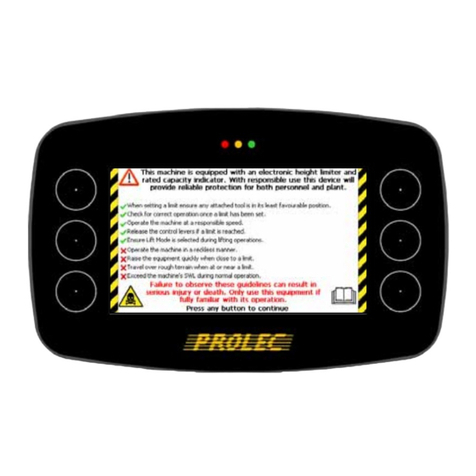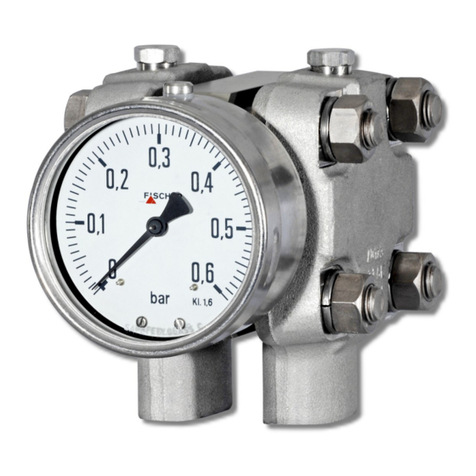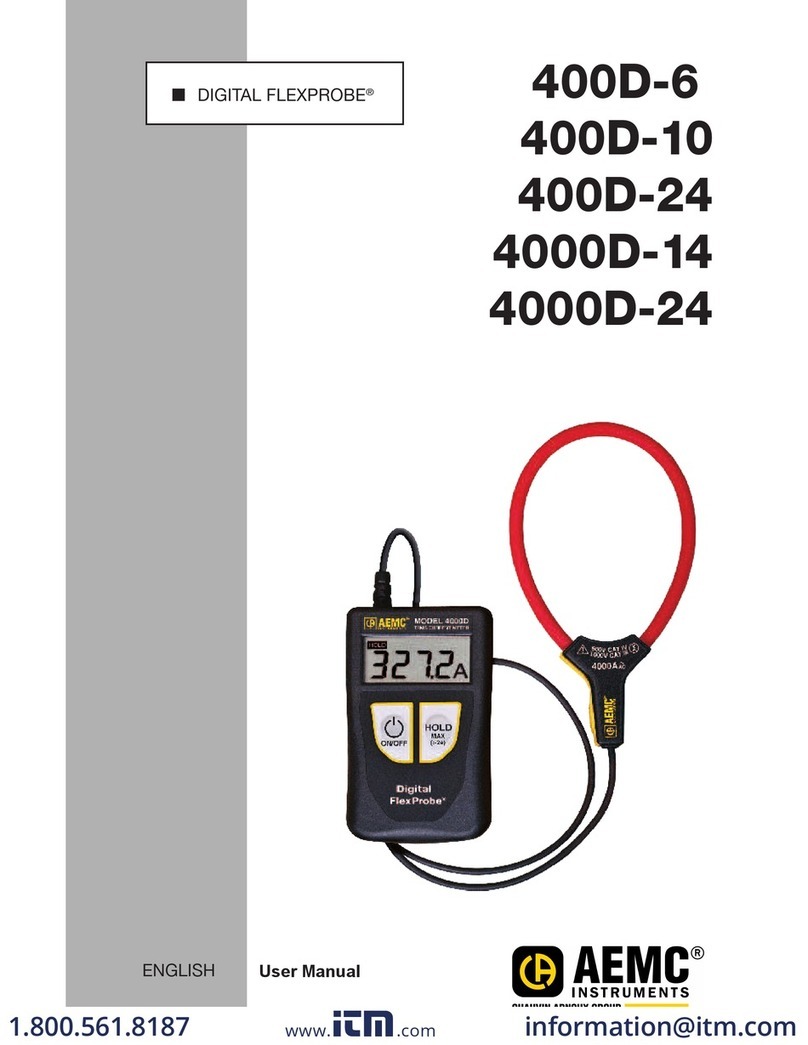envea VIEW 370 User manual

VIEW 370
VIEW 373
USER MANUAL


VIEW 370
VIEW 373
Particulate Measurement System
USER MANUAL
Publication Part Number: PC-000855-MA

Publication Part No. PC-000855-MA
Issue 6
December 2021
Original language: English
Copyright © ENVEA UK Ltd 2021
All rights reserved throughout the world. No part of this
document may be stored in a retrieval system,
transmitted, copied, or reproduced in any way, including,
but not limited to photocopy, photograph, magnetic or
other records without the prior agreement and permission
in writing of ENVEA UK Ltd.
Disclaimer
ENVEA reserves the right to revise and update this
documentation from time to time without obligation to
provide notification of such revision or change. Revised
documentation may be obtainable from ENVEA.
ENVEA reserves the right, without notice, to make
changes in equipment design or performance as progress
in engineering, manufacturing or technology may warrant.
Trademarks
All product trademarks and registered trademarks are the
property of ENVEA UK Ltd.
All other product trademarks and registered trademarks
are the property of their respective companies.
envea™ is a trademark of the ENVEA Group.
Feedback
ENVEA encourages customer feedback and welcomes any
comments or suggestions relating to the product or its
documentation.
Published by:
Technical Publications
ENVEA UK Ltd
ENVEA House
Rose & Crown Road
Swavesey,
CB24 4RB, United Kingdom
Email: technicalpublications.[email protected]

VIEW 370/373
ENVEA UK Ltd (PC-000855-MA Issue 6, December 2021) v
Table of Contents
1INTRODUCTION_____________________________________________ 1
1.1 Purpose of this Manual ................................................................................... 1
1.2 Product Safety............................................................................................... 1
1.2.1 Danger from Process ........................................................................... 1
1.3 Safety Procedures ..................................................................................... 1
1.4 Intended Use ................................................................................................ 3
1.4.1 Limits of Use ...................................................................................... 3
1.5 Additional Information .................................................................................... 3
1.5.1 Product Serial Numbers ....................................................................... 3
1.5.2 List of Abbreviations............................................................................ 3
1.5.3 Related Documentation........................................................................ 3
1.5.4 Product Parts and Options .................................................................... 4
1.6 Certification .................................................................................................. 4
1.6.1 Conformance and related Standards...................................................... 4
2TECHNICAL DATA ___________________________________________ 5
2.1 Process and Application Conditions................................................................... 5
2.2 Sensor Specification ....................................................................................... 5
2.2.1 Dimensioned Drawings –Standard Sensor ............................................. 6
2.2.2 Sensor Options ................................................................................... 7
2.3 System Options ............................................................................................. 7
2.4 Cabling......................................................................................................... 8
2.4.1 Power Supply Cable Specification .......................................................... 8
2.4.2 Data Cable Specification ...................................................................... 8
2.5 PC Software Suite (PC-ME DUST TOOLS) .......................................................... 9
3SYSTEM DESCRIPTION ______________________________________ 10
3.1 Components................................................................................................ 10
3.2 Sensor........................................................................................................ 10
3.3 Control Unit ................................................................................................ 10
3.4 Principle of Operation ................................................................................... 11
4UNPACKING AND PREPARATION _______________________________ 12
4.1 Unpacking and Inspection ............................................................................. 12
4.2 Network Layouts.......................................................................................... 12
4.3 Prerequisites and Guidelines.......................................................................... 12
4.3.1 Location Requirements ...................................................................... 12
4.3.2 Cabling and Cable Routing ................................................................. 12
4.3.3 Grounding the Sensor........................................................................ 13
5SENSOR INSTALLATION _____________________________________ 14
5.1 Safety Information....................................................................................... 14
5.2 Mounting the Sensor .................................................................................... 15
5.2.1 Fitting the Sensor to the Stack ........................................................... 15
5.3 Connecting the Sensor ................................................................................. 17
5.3.1 Sensor Connections........................................................................... 17
5.3.2 Electrical Connections (Power/Comms) ................................................ 17
5.3.3 Set Address Switch (SW100).............................................................. 18
5.3.4 Set Sensor Comms Mode (SW101)...................................................... 18
6BASIC SYSTEM SETUP _______________________________________ 20
6.1 User Controls and Functionality ..................................................................... 20
6.1.1 The ProController UI.......................................................................... 20

VIEW 370/373
vi (PC-000855-MA Issue 6, December 2021) ENVEA UK Ltd
6.1.2 Standard Controller UI....................................................................... 21
6.2 ProController –Function Keys........................................................................ 21
6.3 Main Menu Screens ...................................................................................... 22
6.3.1 Other Symbols ................................................................................. 23
6.4 Initial System Checks ................................................................................... 24
6.4.1 On Power-up .................................................................................... 24
6.4.2 Performing a Master Reset ................................................................. 24
6.4.3 Checking the Sensor Comms Mode...................................................... 24
6.5 Adding Sensors to the Network...................................................................... 25
6.5.1 Detecting Sensors Automatically ......................................................... 25
6.6 Editing Basic Sensor Settings ........................................................................ 26
6.7 Scaling Factor ............................................................................................. 27
6.8 Log Rates ................................................................................................... 27
6.8.1 Adjusting Log Rates .......................................................................... 27
6.9 More Sensor Settings ................................................................................... 27
6.9.1 Adding Sensors Manually ................................................................... 27
6.9.2 Editing Sensor/Device Settings ........................................................... 28
6.9.3 Deleting a Sensor/Device ................................................................... 28
6.9.4 Editing Settings for all Sensors/Devices at Once ................................... 29
6.9.5 Advanced Settings ............................................................................ 29
7QUALITY ASSURANCE AND SENSOR SELF-TESTS __________________ 30
7.1 Introduction ................................................................................................ 30
7.2 Sensor Self-Tests......................................................................................... 30
7.2.1 Running Self-checks Manually ............................................................ 30
7.2.2 Zero and Span Checks....................................................................... 31
7.2.3 Short-circuit Check (Contamination Check) .......................................... 31
7.2.4 Self-test Values (Pass levels).............................................................. 31
7.2.5 Disabling Self-tests ........................................................................... 31
7.2.6 Disabling Sensor Check Alarms........................................................... 31
7.3 Comms Check ............................................................................................. 32
8MAINTENANCE_____________________________________________ 33
8.1 Safety Information....................................................................................... 33
8.2 Maintenance Mode ....................................................................................... 33
8.2.1 Placing a Sensor in Maintenance Mode................................................. 34
8.2.2 Sensor Status................................................................................... 35
8.3 Service Messages......................................................................................... 35
8.3.1 Clearing Service Messages ................................................................. 36
8.4 Inspecting and Cleaning the Sensor ............................................................... 36
8.5 Troubleshooting........................................................................................... 38
8.5.1 Communication Failure ...................................................................... 38
8.5.2 Checking Network Spurs .................................................................... 38
8.5.3 Power Loss....................................................................................... 38
8.5.4 Frozen Readings ............................................................................... 38
8.5.5 Sensor Reading too Low or too High.................................................... 39
APPENDIX A–SCALING _________________________________________ 40
Introduction....................................................................................................... 40
Calculating the Scaling Factor........................................................................ 40
Calibration Procedure.......................................................................................... 40
Using the Calibration Tool ............................................................................. 41
Calculating the Scaling Factor........................................................................ 42

VIEW 370/373
ENVEA UK Ltd (PC-000855-MA Issue 6, December 2021) vii
APPENDIX B–MENU MAPS ______________________________________ 43
Main Menu Screens............................................................................................. 43
Basic Sensor Setup............................................................................................. 44
More Sensor Settings.......................................................................................... 45
Basic System Setup ............................................................................................ 46
Other Functions.................................................................................................. 47
Quality Assurance (QA) and Scaling ...................................................................... 48
GENERAL NOTICES ____________________________________________ 49
Compliance........................................................................................................ 49
Waste of Electrical and Electronic Equipment (WEEE) Directive (2012/19/EU)...... 49
RoHS Compliance Statement......................................................................... 49
List of Materials ........................................................................................... 49
INDEX ______________________________________________________ 50
ENVEA SERVICE AND SUPPORT CENTRES ___________________________ 52
List of Figures
Figure 1: Dimensional drawing of VIEW 370_373 sensor. .......................................... 6
Figure 2: VIEW 370/373 X sensor (with grounding strap). ....................................... 10
Figure 3: Principle of operation –ElectroDynamic®sensors...................................... 11
Figure 4: Fitting the sensor to the stack (example)................................................. 15
Figure 5: Sensor PCB connections. ....................................................................... 17
Figure 6: ProController –User interface with controls.............................................. 20
Figure 7: Standard Controller –User interface with controls..................................... 21
Figure 8: Screen elements (example). .................................................................. 23
Figure 9: Autodetect –Adding sensors automatically. ............................................. 25
Figure 10: Setup screen –Sensor/system settings. ................................................ 26
Figure 11: Basic sensor settings. .......................................................................... 26
Figure 12: More Settings –Sensor settings screen.................................................. 28
Figure 13: Quality Assurance (QA)/Self Tests screen............................................... 30
Figure 14: Maintenance Mode screen. ................................................................... 34
Figure 15: Sensor status (list).............................................................................. 35
Figure 16: Calibration tool (with direction of editing)............................................... 41
Figure 17: Menu map –Main menu screens and their icons. .................................... 43
Figure 18: Menu map –Basic sensor setup. ........................................................... 44
Figure 19: Menu map –More Settings menus. ....................................................... 45
Figure 20: Menu map –System setup menus......................................................... 46
Figure 21: Menu map –Other Functions menus...................................................... 47
Figure 22: Menu map –QA and Scaling menus. ..................................................... 48

VIEW 370/373
viii (PC-000855-MA Issue 6, December 2021) ENVEA UK Ltd
[This page is left blank intentionally.]

VIEW 370/373 1 Introduction
ENVEA UK Ltd (PC-000855-MA Issue 6, December 2021) 1
1Introduction
1.1 Purpose of this Manual
This manual contains all the information necessary for the correct installation,
setup, operation, and maintenance of the instrument. The procedures included in
this manual must be carried out only by suitably trained and qualified personnel.
1.2 Product Safety
The following symbols are used throughout this manual to indicate procedures
that, if not followed correctly, may result in personal injury or damage to
equipment.
WARNING
Alerts the user to a procedure or practice that can result in personal injury,
injury of others, or death if not followed correctly.
CAUTION
Alerts the user to a procedure or practice that can result in damage to the
system or ancillary equipment if not followed correctly.
NOTE
Notes are used to highlight important information that may assist the
reader in carrying out a procedure or understand the text.
1.2.1 Danger from Process
The system may be connected to ducting that contains process particulate (and
other flue gas constituents) hazardous to health. This can take one or more of the
following forms:
•Particulate which is inflammable or explosive
•Particulate which is toxic or in some other way hazardous to health
•Particulate contained within high-temperature gas.
Take Precautionary Measures
Unless process conditions are known to be entirely safe, suitable precautions such
as the use of breathing apparatus or duct purging/detoxifying must be employed
before entry is made into the duct for installation or maintenance purposes. If in
doubt, consult your local Safety Officer and/or local safety procedures and
guidelines.
1.3 Safety Procedures
Always observe the following safety precautions. Personnel installing, operating,
or maintaining the equipment are responsible for their safety and for the correct
handling and use of the equipment in accordance with the safety instructions
detailed in this manual.
Follow all warnings and instructions marked on the product and in this manual.
Warning labels are situated on the system, indicating a hazard at or near the

1 Introduction VIEW 370/373
2(PC-000855-MA Issue 6, December 2021) ENVEA UK Ltd
location of the warning label. These safety instructions must be followed to avoid
possible personal injury, injury to others, and damage to the product.
If the equipment is used in a manner not specified in this manual, the protection
provided by the equipment may be impaired.
Retain these instructions in a safe and known place for future use.
WARNING
Risk of personal injury or injury to others. All personnel must be fully
trained and adhere to local and, where applicable, site-specific health and
safety laws and guidelines.
It is the responsibility of the local organisations to enforce safe working
practices at all times.
WARNING
Electric shock.
Only connect to an earthed supply. This unit is a Class 1 construction and
must be connected to a protective earth connection (GND).
WARNING
This product must be connected to a power supply of the same voltage (V)
and frequency (Hz) as indicated on the product rating plate and provided
in the TECHNICAL DATA section of this manual.
A supply cable with an adequate rating must be used. Temperature de-
rating must be considered.
WARNING
Electric shock.
A suitable approved and rated mains isolation device must be installed.
The device must be clearly marked and easily accessible (within a
2m/6½ ft. radius) to allow the control unit to be switched off when at the
unit.
The contact gap of the disconnect device must be at least 3mm.
CAUTION
Position the unit to avoid excessive heat, vibration, humidity, and dust.
CAUTION
Failure to service or maintain the product, fitting non-approved parts, or
carrying out non-approved alterations or servicing can be dangerous. It
could affect the safety of the product. It may also invalidate the terms and
conditions of the product warranty.

VIEW 370/373 1 Introduction
ENVEA UK Ltd (PC-000855-MA Issue 6, December 2021) 3
1.4 Intended Use
The VIEW 370/373 is a Particulate CEM designed for high-quality emission
measurement in industrial stacks after bag filters, cartridge filters, cyclones, and
process driers, where regulatory approvals are not required. The instrument
operates between operator-switchable modes for bag-leak/broken-bag detection,
process control or emissions reporting, and offers patented quality assurance
features for reliable and stable performance.
1.4.1 Limits of Use
To achieve optimum performance and safe operation, the equipment must be
operated within the limits detailed in the TECHNICAL DATA section. Operation outside
these limits may result in damage to the equipment.
Pollution Degree 2
This equipment is designed for operation in Pollution Degree 2 environments
(where only non-conductive pollution occurs, except that occasionally a temporary
conductivity caused by condensation is expected.
Overvoltage Category II
Overvoltage Category II is for equipment or instruments intended to be supplied
from the building wiring. It applies both to PLUG-CONNECTED EQUIPMENT and to
PERMANENTLY CONNECTED EQUIPMENT.
1.5 Additional Information
1.5.1 Product Serial Numbers
The serial number label can be found on the side of the sensor and control unit
enclosures. The serial number(s) on the unit(s) should match those on the
corresponding Test Record Card for your instrument or system.
1.5.2 List of Abbreviations
The following abbreviations and terms are used in this manual.
Acronym
Meaning
AIM
Auxiliary Input Module
AOM
Analogue Output Module
CEM
Continuous Emissions Monitor
ESP
Electrostatic precipitator
L/min
Litres per minute (purge air flow rate)
PSU Repeater
Network power supply unit
ROM
Relay Output Module
1.5.3 Related Documentation
The following literature may be consulted in conjunction with this manual as
applicable. A Reference Library with supporting information for your product or
system is included with the product documentation. With reference to this product,

1 Introduction VIEW 370/373
4(PC-000855-MA Issue 6, December 2021) ENVEA UK Ltd
the following documents may be requested from ENVEA or your local ENVEA
representative:
Included in the Reference Library
•Control unit reference manual (Publication Part Number (PPN): 493500)
•Installation of Network devices (PPN: 493501)
•TN004 Installation Guide (PPN: 491021)
•TN007 Network Cable Lengths (PPN: 491033)
1.5.4 Product Parts and Options
For details of product options, software, accessories, spares, and upgrade options
for your instrument, refer to the VIEW 370/373 datasheet and order information
available on request and from the ENVEA UK website (see the reverse of this
manual).
1.6 Certification
1.6.1 Conformance and related Standards
ENVEA UK Ltd hereby declares that this instrument –within the limits specified in
this manual –conforms to the essential requirements and other provisions of the
pursuant of the following:
1. European Union Directives: Low Voltage and EMC.
2. UK Regulation 2016: Low Voltage and EMC.
For details, refer to the relevant Declaration of Conformity (DoC) for this instrument
or system supplied with your order.

VIEW 370/373 2 Technical Data
ENVEA UK Ltd (PC-000855-MA Issue 6, December 2021) 5
2Technical Data
2.1 Process and Application Conditions
Stack temperature rangesA
-20 to +250 °C (-4 to 482 °F)
Option: up to 400 (752 °F) / 800 °C (1,472 °F)
Stack diameter
Ø100 mm to 6 m (4”to 20 ft., nom.)
Application conditions
Suitable for measurement in non-condensing flue gases.
Note: not suitable for use downstream of ESPs or in
applications with water droplets.
Sensor –Key data
Measurement capability
0–10 to 0–500 mg/m³ (automatic range changes)
Long-term zero drift
<0.1 mg/m³
Velocity dependency
For use in processes with flow above the 8–20 m/s
range with no restrictions.
Constant velocity is required outside this range.
Inspection frequency
Every 6 months
Environmental information
Temperature range
-20 to +50 °C (-4 to 122 °F), ambient
2.2 Sensor Specification
VIEW 370 / 373 Sensor
Sensor variants
Standard sensor:
Insulated sensor:
Passive/active sensor:
High-temperature sensor:
0–100 °C / 0–250 °C
0–250 °C
0–250 °C / 0–400 °C
0-400 °C / 0–800 °C
Sensor body material
Standard: 316 Stainless steel
Passive/active: 316 Stainless steel
Fully insulated: PTFE-coated 316 Stainless steel
Weight
1.8 kg (4 lb), standard sensor
Stack connection
1½″BSP (female) B
Enclosure
Dimensions
W 122 x H 122 x D 80 mm (5 x 5 x 3.2”)
Protection rating
IP65
Enclosure material
Die-cast aluminium (epoxy coated)
Cable entries
2x M16 cable glands (one blanked ex-works)
A
At monitoring point. Please note that imperial temperatures given are nominal values.
B
Ensure the opening/hole in stack wall is at least Ø45 mm.

2 Technical Data VIEW 370/373
6(PC-000855-MA Issue 6, December 2021) ENVEA UK Ltd
VIEW 370 / 373 Sensor
I/O
Local outputs
RS-485 connection (to control unit)
Power requirements
Power supply
18–24V (provided by the control unit)
Current consumption
35 mA
Cable type
4-core screen (see the cable specifications below)
Other requirements
Air Purge provision
May be required on some applications (contact ENVEA or
your local ENVEA representative for further details).
Requires optional air purge fitting and an external
supply of 5–10 L/min of dry, clean (oil-free)
instrument air.
2.2.1 Dimensioned Drawings –Standard Sensor
Clearance (in mm): 55 + probe length
Figure 1: Dimensional drawing of VIEW 370_373 sensor.

VIEW 370/373 2 Technical Data
ENVEA UK Ltd (PC-000855-MA Issue 6, December 2021) 7
2.2.2 Sensor Options
Rod lengths
Standard: 100–500 mm; option: 600, 800, 1000 mm
Insulated version: 200–1000 mm
Passive/active and high-temperature variants: 100–800
mm
Air purge fittings
(ACCAIR)
1/4” BSP (for standard, insulated, passive sensor
versions)
Air purge with Air Filter Regulator assembly (-FFR)
Hazardous zone
classification
ATEX / IECEx Dust zones 20/21 (Cat. 2/1D) and 22 (Cat.
3D)
Please refer to the Ex manual for the sensor manual for
details.
2.3 System Options
The system is compatible and may be used in conjunction with ENVEA net
modules.
ENVEA Control UnitC
Standard Controller (for single-sensor systems)
ProController (multiple sensors, up to 32
channels)
Network Modules
Analogue Output Module
(AOM)
8x 4-20 mA (500Ω)
Auxiliary Input Module
(AIM)
4x 4-20 mA inputs or
4x Digital inputs
Network spur
Divides a Modbus (RS-485) cable into two
branches.
PSU Repeater
Power supply unit for voltage and signal boost for
extended cabling runs with multiple sensors.
Relay Output Module
(ROM)
8x Relays (1A @ 250V), user configurable
For more information on connecting the sensor network/system consult the relevant
wiring diagrams (see RELATED DOCUMENTATION on page 3).
NOTE
Network modules must only be used in conjunction with ENVEA
control units.
C
If a control unit is required, refer to the VIEW 370/373 datasheet and order information for details (see
PRODUCT PARTS AND OPTIONS on page 4).

2 Technical Data VIEW 370/373
8(PC-000855-MA Issue 6, December 2021) ENVEA UK Ltd
2.4 Cabling
All cabling should be rated for use up to at least +65 °C (149 °F) to allow for an
ambient temperature of up to +50 °C (122 °F). Cables supplied by ENVEA meet
these requirements. For information on sensor cabling requirements and
considerations, refer to Technical Note TN007 Network Cable Lengths (see page
3).
Maximum
cable lengths
RS-232: 15 m (50 ft.)
RS-485: 1,000 m (0.6 mi / 3,280 ft.)
ProController only –
Ethernet (RJ45): up to 100 m (333 ft.) between active
devices
USB 2.0: 2 m (6½ ft.)
2.4.1 Power Supply Cable Specification
WARNING
Hazardous voltages.
A suitable approved and rated mains isolation device must be installed.
The device must be clearly marked and easily accessible (within a
2m/6½ ft. radius) to allow the control unit to be switched off when at the
unit.
The contact gap of the disconnect device must be at least 3 mm.
For mains connections, use an appropriate cable with a conductor area range from
0.75mm² to 2.5mm², in accordance with your local regulations.
2.4.2 Data Cable Specification
The minimum requirements are outlined in the following table. Cables supplied by
ENVEA meet these requirements.
Cable type
4-core (2-pair) cable; conductor size: 0.5 mm²
(16/0.2)
Current rating
1A r.m.s (per core), max.
Working
voltage
440V r.m.s, max.
Cable shielding
Flame-retardant PVC outer sheath (Ø7.9 mm/0.3
sq.in.), with overall tinned copper, braided, or foil
screen.
Note: for electrically noisy environments, the use of a
braided, screened cable is recommended. For very
noisy environments, use a cable with multiple layers of
foil and braid shielding.
Resistance
<40Ω /km (12.192 Ω/kft), recommended for long
cable runs
Compliance
BS5308 part 2, type 1

VIEW 370/373 2 Technical Data
ENVEA UK Ltd (PC-000855-MA Issue 6, December 2021) 9
2.5 PC Software Suite (PC-ME DUST TOOLS)
The minimum system specification (for desktop/laptop PCs) is set out in the
following table. For more information on requirements and software modules,
refer to PRODUCT PARTS AND OPTIONS on page 4.
Operating
system
Windows XP or higher
System memory
32 Mb RAM,
20 Mb free hard disk space
Monitor
1024 x 768, high-colour graphics
Data
communication
Serial port (for connection to one or more
instruments)
ProController only –
Ethernet (RJ45; via Modbus TCP),
USB 2.0, standard type A-to-A, M:M
Optical disc
drive
(DVD/CD)
PC-ME DUST TOOLS software is supplied on a
software CD, and it is also available for download
from the ENVEA UK website
(http://www.envea.global/s/process-en/dahs-
software/pc-me-dust-tools/).
Licensing
Multi-user license options (for up to 5 or up to 10
users)

3 System Description VIEW 370/373
10 (PC-000855-MA Issue 6, December 2021) ENVEA UK Ltd
3System Description
3.1 Components
Figure 2: VIEW 370/373 X sensor (with grounding strap).
3.2 Sensor
The VIEW 370 (373) sensor has a metal probe rod mounted to the small ‘B’
enclosure containing the electronic circuitry. The sensor is connected to the
control unit by a cable of up to 1,000m (0.6 mi) in length. For multi-sensor
systems, network spurs must be used to connect the sensors to a network.
In addition, the VIEW 373 also provides long-term data logging.
3.3 Control Unit
The VIEW 370 (373) is powered via an ENVEA control unit (supplying 24V DC).
The sensor can be interfaced with the Standard Controller for a single-channel
Standard system or the multi-channel ProController for an extensible PRO system
(with up to 32 sensor channels) that is flexible and can be configured easily.
The control unit further provides remote automatic control, measurement, as well
as initiating tests to ensure sensor integrity.
The control unit has its own logging capability for process and regulatory
reporting. Data may be downloaded using PC-ME DUST TOOLS, ENVEA’s modular
software suite. For further details on a control unit, refer to the relevant manual
(see page 3).

VIEW 370/373 3 System Description
ENVEA UK Ltd (PC-000855-MA Issue 6, December 2021) 11
3.4 Principle of Operation
Figure 3: Principle of operation –ElectroDynamic®sensors.
The sensor utilizes the proven and reliable ElectroDynamic®Probe Electrification
technology patented by ENVEA, whereby the collision and interaction of particles
with the probe rod (particle impingement) causes a small electrical charge transfer
to occur between the particulate and the probe rod. It is this small electrical
charge that provides the signal that is monitored by the electronics. Provided the
material type remains constant, the signal generated is proportional to the dust
concentration, even if an accumulation of dust forms on the sensor rod.

4 Unpacking and Preparation VIEW 370/373
12 (PC-000855-MA Issue 6, December 2021) ENVEA UK Ltd
4Unpacking and Preparation
4.1 Unpacking and Inspection
Carefully unpack the units and retain the packaging to return equipment for
servicing or repair. If the equipment is damaged in any way, return it to ENVEA
(see the reverse of this manual) in its original packaging.
No responsibility for damage resulting from the use of non-approved packaging
will be accepted.
NOTE
Ensure all items and accessories specified are present. If not,
contact ENVEA or your local ENVEA representative.
4.2 Network Layouts
Standard Systems
Connect a single ENVEA sensor directly to a Standard Controller for a standard,
single-channel system.
PRO Systems
Connect multiple sensors to the ProController either using network spurs or by
daisy-chaining the sensors. For medium to large systems, it is best to place the
control unit(s) in the network centre to minimize voltage drop along cable runs.
For large systems, you may need to boost power using a PSU Repeater (power
supply unit; see SYSTEM OPTIONS on page 7 for details).
4.3 Prerequisites and Guidelines
4.3.1 Location Requirements
When selecting a mounting location for the sensor, the following should be
considered for optimum performance.
1. Mount in the longest, straightest, unrestricted duct available.
2. Ensure correct sensor grounding (see the section below).
3. Avoid excessive vibration. Excessive vibration will affect sensor readings.
4. Ambient or radiating temperatures in the vicinity of the mounting location
must not exceed 50 °C (122 °F).
Refer to the Installation Notes (TN004) for more details (see SECTION 1.5.3 on page
3).
4.3.2 Cabling and Cable Routing
Where the network includes a network spur, the two cables between the sensor
and spur and the spur and control unit are of the same type (comprising four
cores with an overall screen, see SECTION 2.4.2 on page 8). When routing cables,
observe the following:
•Ensure the cable sheath fully penetrates the cable entry gland.
•Fit blanking plugs to unused cable entry glands.
•Ensure cable entry glands are tightened to the cable.
This manual suits for next models
1
Table of contents
Other envea Measuring Instrument manuals

